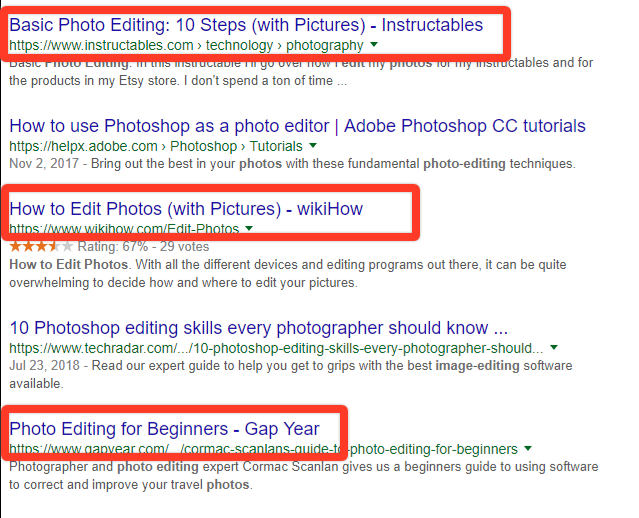As with personal documents or academic writing, fiction writing can be challenging. Our editors have encountered five problems on a regular basis. By avoiding these habits, your fiction writing will be greatly improved.
1. Generic verbs and nouns
Imagine trying to paint everything in the world using just four colors. The results would probably look pretty generic. When you are a writer, your language is your medium. People, places, and things (i.e., nouns) have names, and it’s your job to know what they are.
Precise nouns work wonders in fiction writing because nouns have connotations or meanings that go beyond their dictionary definitions. If one character gives another character flowers, tell readers what kind of flowers. Are they tulips or columbines or snapdragons or peonies? This information could hint at what time of year it is (tulips are pretty scarce in September) and could also tell us something about the character who gives the flowers. Four dozen roses are expensive—does this person have money or like to show off? A bouquet of wildflowers might have come from the character’s backyard—perhaps this person likes to garden.
A similar thought process should be applied to the selection of verbs. There are at least 12 synonyms for the verb to laugh, and each one evokes a specific image. A character could express amusement by cackling, chortling, chuckling, giggling, guffawing, snickering, sniggering, tittering, crowing, whooping, simpering, or smirking.
Precise verbs contribute greatly to characterization. If a man walks into a room, all your readers know is that he has entered. He could be anybody. But if he limps in, right away readers want to know if he is old or injured or tired. If he runs in, readers know he is energetic or excited about some piece of news. If he swaggers, readers wonder if he is full of himself or perhaps just drunk.
2. The exception: He said, she said
Reading good dialogue makes readers feel like they’re actually listening in on a real conversation. Because of this, it can be very disruptive if the author keeps butting in to tell readers that the speaker intoned or declared or asserted or retorted. It may seem like using “said” repeatedly in dialogue tags is repetitive, but in fact the little word is so inconspicuous, it just fades into the background—which is exactly what we want when we’re trying to listen in on a good conversation.
The rare deviation is fine (asked, in particular, seems to be okay once in a while), but if you find yourself using a colorful synonym for every dialogue tag in your manuscript or screenplay, you may be doing more harm than good.
3. Adjective/Adverb-a-rhea
Sometimes a well-placed and specific adverb or adjective strengthens or clarifies an image. However, many writers, in a misguided attempt to make their fiction writing descriptive, overuse these words. If you master the use of precise nouns and verbs (see tip number one), you’ll almost certainly avoid the bad habit of propping up a weak verb or noun with a host of intrusive modifiers, as in the following example:
Carrying a steaming and fragrant mug, she walked angrily and loudly into his office.
Why write that, when you could have simply said:
Carrying her peppermint tea, she stormed into his office.
The second sentence actually gives us more information using fewer words.
Furthermore, when editing your manuscript, be especially wary of adjectives that don’t actually convey much…
interesting, lovely, exciting, beautiful
…and adverbs that introduce redundancy…
stereo blared loudly (blared implies high volume)
scrubbed vigorously (scrubbed implies intensity)
…or contradict the meaning of the verb or adjective they modify.
slightly pregnant (with pregnancy, you either are or you aren’t!)
very unique (something is either unique or not unique)
4. Inconsistent point of view
An author of fiction must choose the perspective, or point of view, from which a story will be told. In first-person narration, one character tells the story in his or her own voice (using “I”). Third-person narration can be either limited (an objective narrator tells the story by focusing on a particular character’s thoughts and interactions) or omniscient (the narrator sees and hears all).
No single point of view is better than another, but once you have made a choice, be consistent. If your story is told in first-person, then remember that the narrator must be present in every scene he describes to the reader; otherwise, how would the character have the information?
Similarly, a limited third-person narrator who hears only Tom’s thoughts tells the story for the first four chapters, the reader should not suddenly be privy to the mailman’s daydreams in chapter five.
Of course, there are some great examples of novels that experiment with point of view by switching between narrators. But even in these stories, some kind of predictable pattern is imposed for clarity, such as a change in narrator from one chapter to the next, but not within a chapter.
5. Unnaturally expositional, stilted, or irrelevant dialogue
Read your dialogue out loud. Does it sound like the way people actually talk (without all the ums and ahs and boring digressions, of course)? Do the characters rattle off factual information you are trying to jam into the story? Are they talking about the weather? Because if they’re talking about the weather, you’d better have a good reason for it. Otherwise, the reader will feel bored, and a bored reader closes his or her book and turns on the TV.
All of this advice is important, but by far the worst habit a fiction writer can develop is the habit of giving up too easily. Keep writing every day. If you need help, remember that our manuscript editors are available 24/7 and that they can help you tackle all of your manuscript mishaps.
Culled from Scribendi







